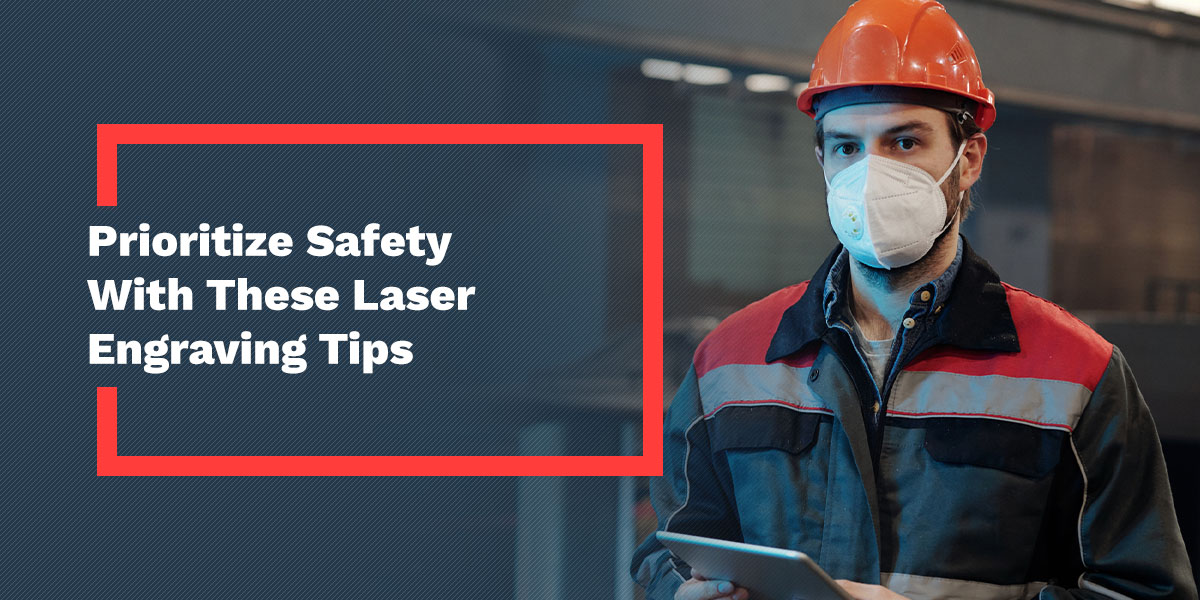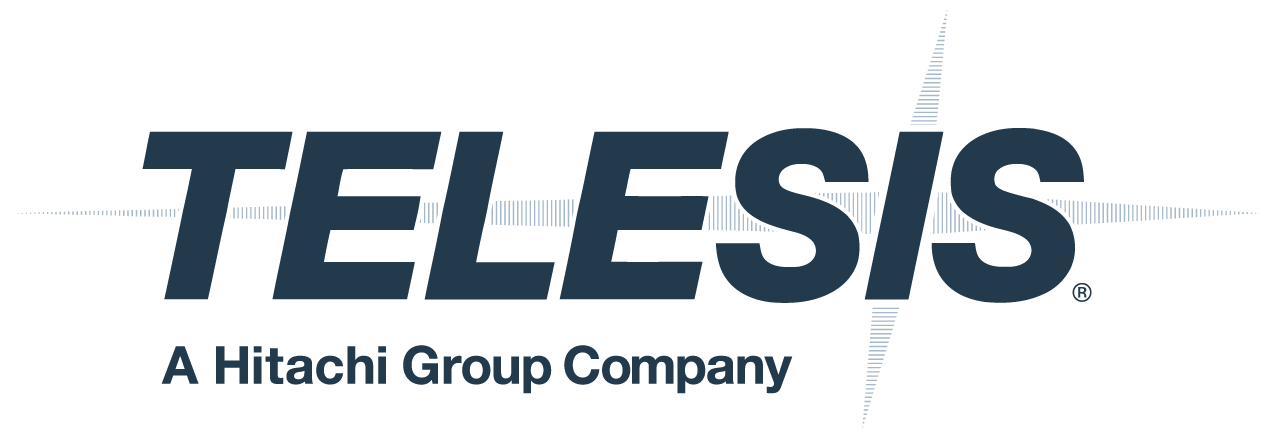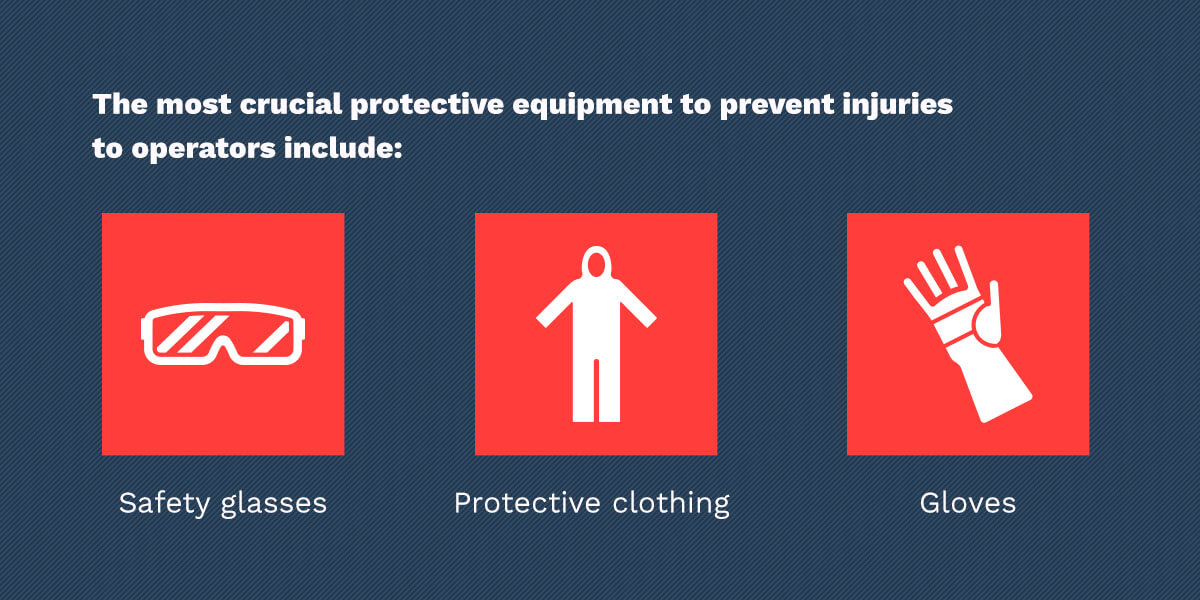
21 Feb Prioritize Safety With These Laser Engraving Tips
Laser engraving is a technology that enables businesses and companies in many industries to embed permanent markings on their products. It also provides them with exceptional accuracy and precision. While it’s a non-contact mechanism that’s generally safe for humans, it’s associated with various personal injury risks and hazards. Therefore, it’s essential to take proper laser engraving safety precautions to prevent potential risks and hazards.
Common Hazards
Exposure to different laser classes poses potentially dangerous health risks to the personnel operating the machinery and other people around. Here are the most common laser engraving hazards:
- Eye injuries: These are the most severe laser engraving risks because they affect most parts of the eyes and are caused by several laser classes, including Class 3B and Class 4. Exposure to highly concentrated laser radiation and self-protective blinking responses may damage a person’s lens, cornea or retina, leading to partial or total vision loss. The degree of eye damage depends on the laser beam’s focus, the strength of the beam and the amount of energy consumed.
- Skin injuries: Different laser classes, wavelengths and exposure times make operators susceptible to skin injuries, such as burns, flaking, drying, itching and redness.
- Fire hazards: Lasers have a higher fire safety risk than other marking products because they generate intense heat that’s enough to ignite several materials, causing fires and other types of damage. Generally, laser engraving machines have a potential fire risk because they use high voltages, so incorrect connections and improper laser engraving machine maintenance may result in electrical shocks and fire hazards.
- Air contaminants: Laser marking machines produce numerous toxic particles, fumes and vapors from the substrates. These are released into the air and may irritate the eyes, nose, lungs, and skin. They may also build up in the body, causing serious illness and fatalities in the long term. Ventiliation is also important, as marking certain materials can produce toxic fumes.
Ways to Use Industrial Lasers Safely
The following laser marking safety guidelines and best practices are crucial for mitigating the risks associated with the process.
Wear Protection
Personal protective equipment (PPE) is essential for operators accessing areas near where Class 4 laser engraving products are being used. The most crucial protective equipment to prevent injuries to operators include:
- Safety glasses: Considering eye damage is among the most common laser marking hazards, safety glasses are a must to protect the operator’s eyes from intense laser radiation. Avoid UV-optimized goggles and look for filter-type safety goggles with a high optical density, depending on the frequency of the laser you are using.
- Protective clothing: Operators need safety clothing, including lab coats, head covers and face shields, to protect their skin from laser radiation and toxic fumes. Make sure you select protective clothing specifically designed for laser engraving because general PPE doesn’t provide adequate protection from laser radiation.
- Gloves: Gloves protect the operators’ hands from contact with hazardous materials and prevent burns, cuts and electrical shock. Leather work gloves are ideal when operating low-power laser equipment and heavy or chemically hazardous materials.
Protective Enclosures
High-quality Class 1 laser enclosures provide a protective barrier around the laser marking machine to protect people in the working area from harmful radiation and stray beams. These optimize the efficiency of operations by creating a controlled environment and minimizing the effect of external factors, which leads to more consistent and precise results.
These enclosures also safeguard the workspace from particles, fumes, smoke and residues produced during the marking process. They protect your machine from accumulating dust and debris on sensitive parts, prolonging its life span. Protective enclosures for laser machines are equipped with efficient ventilation and filtration systems that prevent hazardous emissions from being released into the atmosphere.
Additionally, they reduce the noise levels the machines produce, creating an optimal working environment where employees can concentrate better and be more productive. Well-designed custom enclosures significantly reduce the hazards by blocking lasers from operating when access panels and doors are open.
Work With Trained Personnel
Laser machine operators are expected to have extensive training and education on how to work around high-powered lasers. They need to understand the various laser classes, plus the risks and hazards associated with each type. Properly trained personnel understand how to set up the machines correctly and align the beams accurately to reduce the risks of accidental laser exposure. They also understand the industry’s standards and regulations to ensure your facility complies with them.
Proper Signage
Safety and warning signs are necessary in areas where laser marking machines are operated to ensure operators, other employees and visitors in the facility take caution as they approach these controlled areas. The signs should be easy to read and posted strategically, such as at the entrance, to give a fair warning. They should also be applied to surfaces such as laser machinery and power sockets used with laser machines and equipment.
Proper signage should inform users of the laser class being operated in the area and the types of risks associated with using the equipment. Laser hazard warning safety signs also remind people of the precautions to take as they access and area to reduce their risk of exposure. The warning signs should comply with industry regulations such as ISO EN 7010 and IEC 60825-1. They’re typically displayed on vibrant yellow backgrounds in bold black lettering to ensure high visibility.
Use Approved Materials Only
The right material choice determines the quality of your engravings and may also prevent accidents in the laser working area. The manufacturer’s guidelines specify the appropriate material to use with your laser marking machine. The manufacturer only recommends materials suitable for laser engraving that emit minimal hazardous fumes and can withstand the process without damaging the machine or the material.
Telesis Offers Class 1 Laser Enclosures for Safe Laser Engraving
Telesis is a leading manufacturer of high-quality laser marking products and equipment. We supply our clients with rugged and reliable laser markers, software, customization and integration. Our product lineup also includes customizable laser enclosures to reduce personnel exposure and enhance laser engraver safety.
The Telesis range of enclosures are constructed using industrial-grade materials and are compliant with top industry standards, such as CDRH Class 1 and ISO13849-1 guidelines. Request a quote for our Class 1 laser enclosures, and our team will help you assess your options and choose the most suitable one for your needs.







